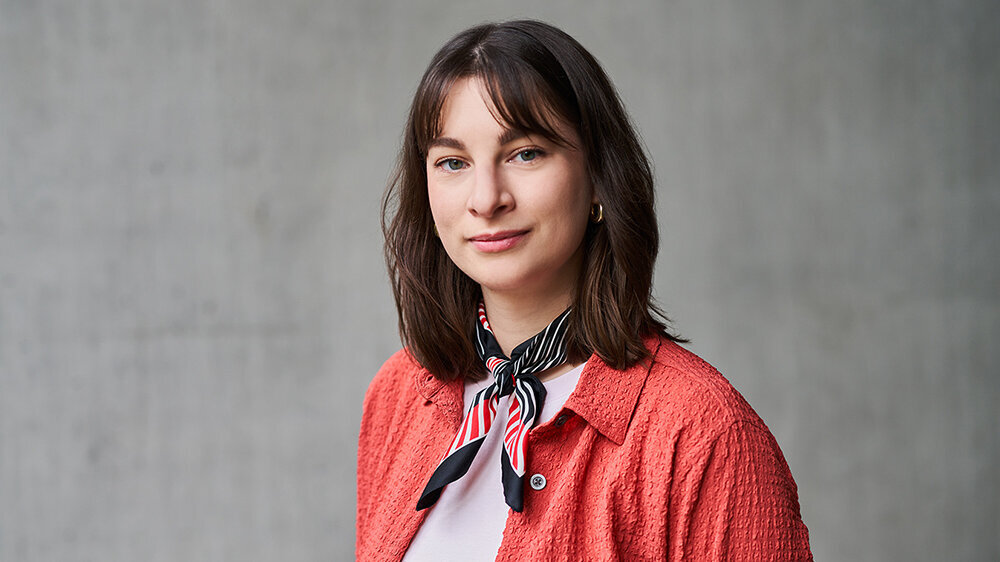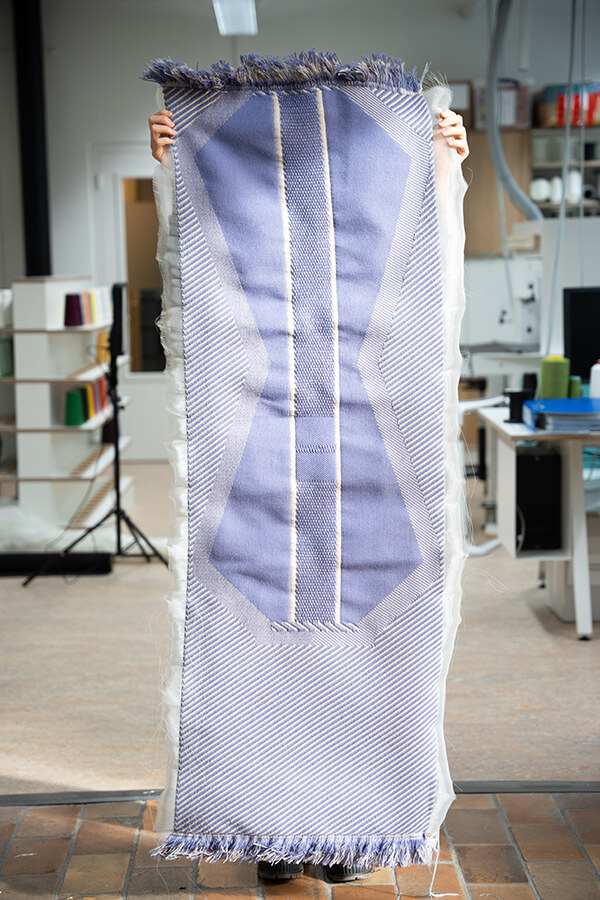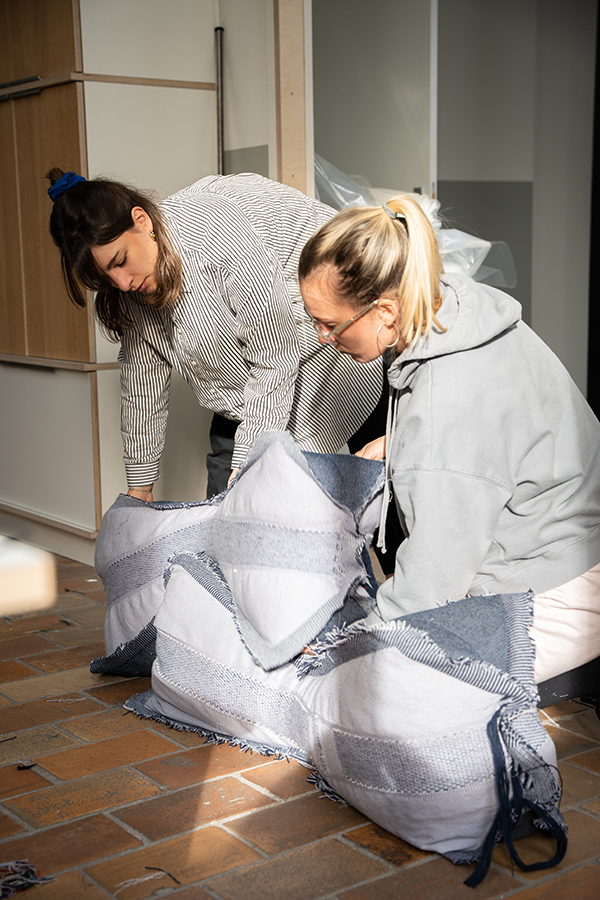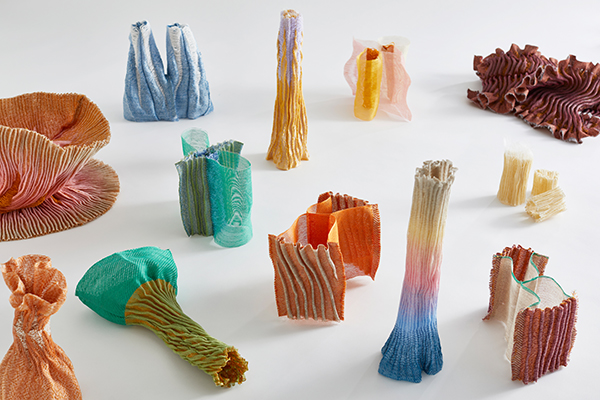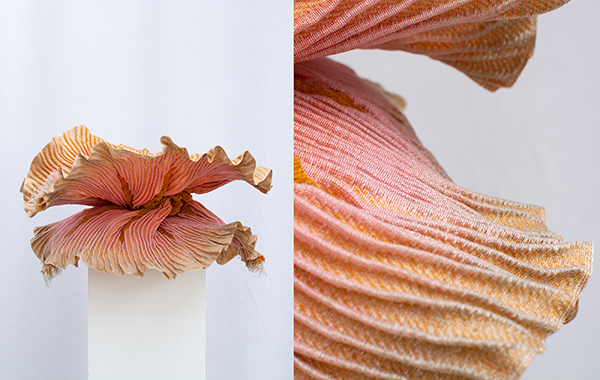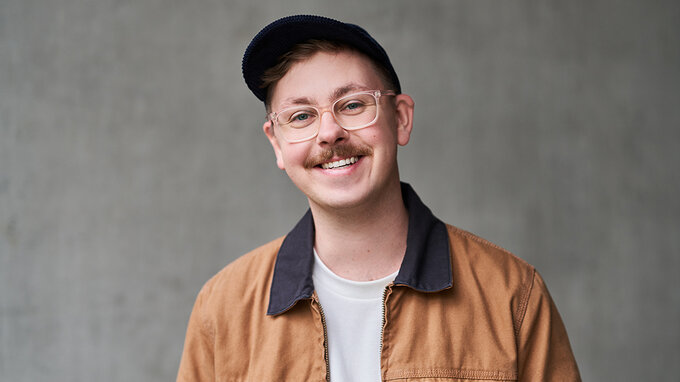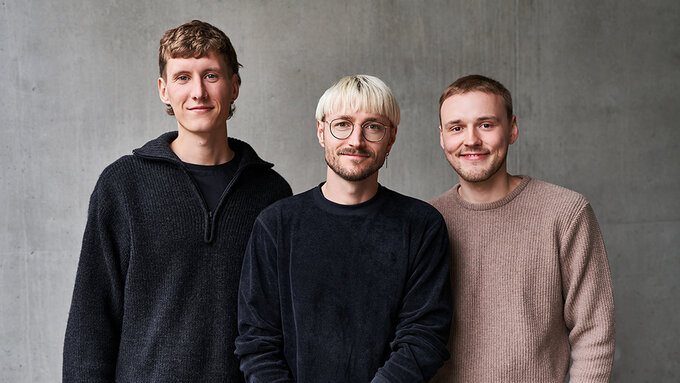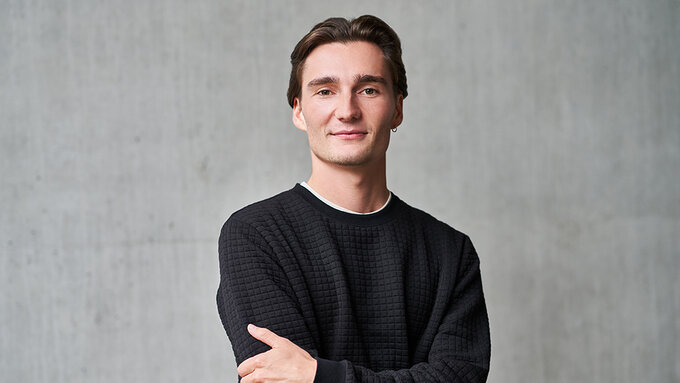Leonie Burkhardt
Leonie Burkhardt was born in Heilbronn in 1994. After a two-year au pair stay in New Jersey, USA, she began a Bachelor's degree in Textile Design at HAW Hamburg in 2016 and went to KMITL in Bangkok for an interim semester from 2018 to 2019. After completing her Bachelor's degree in Hamburg, she moved to the Swedish School of Textiles in Borås for her Master's degree in 2020, where she graduated in 2022. She was a scholarship holder of the German National Academic Foundation from 2019 to 2022. She gained practical experience through internships at Talbot Runhof and Kvadrat, among others. She has already shown her work in numerous international exhibitions such as the Dutch Design Week, the Milan Design Week and the International Biennal of Crafts and Creation in Paris. Leonie Burkhardt now works as a freelancer in the field of textile design. The core of her work is experimenting with textiles. Material and technology, innovation and craftsmanship are directly linked in her work: for example, she creates unusual projects and three-dimensional textile objects using both weaving and shrink yarn.
Interview with Leonie Burkhardt
What does it mean to you to be a finalist for the "German Design Award 2024 - Newcomer"?
Being a finalist for the German Design Award 2024 - Newcomer is above all a great honour and recognition of my work. The award spurs me on to go my own way and continue to deal with future issues in the textile sector.
Your projects and work are located between tradition and innovation as well as between craftsmanship, art and design. How do you combine these different areas of tension?
In my eyes, traditional craftsmanship forms the foundation for further developing and rethinking a technique or material. In recent years, I have worked a lot on Jacquard weaving machines - industrial machines that are programmed using web software. It all looks very complicated at first, but ultimately everything is based on the same principle that was used centuries ago: the right-angled interlacing of two thread systems. In my master's project Woven Forms, I was concerned with the question: How can you create three-dimensionality on a device that is only intended to create something two-dimensional? I see this process as experimental design research, the end product of which does not necessarily have to fulfil a specific "function". This blurs the boundaries between design, craft and art. In my opinion, there is not necessarily a need to separate these fields.
You literally play with the themes of material and three-dimensionality. What appeals to you?
The initial attraction was the idea that if you programme three-dimensionality into the weaving process, you waste less material and reduce production steps, which can lead to a more sustainable production of clothing or upholstery fabrics. However, in order to establish this way of thinking in the industry, we clearly need more research on the subject and a lot of persuasion. During my studies, I was fascinated by the change in colour, texture and material from 2D to 3D. In my master's project Woven Forms, I worked with a synthetic yarn that contracts when exposed to heat. In the Woven Blocks project, together with Jojo Shone, I explored the natural quality of wool, which becomes matted when washed hot. It is always exciting to see what effect the transformation from flat to three-dimensional has on colour and texture.
You studied at various international universities. What experiences were formative for your work?
During my bachelor's degree in Hamburg, I decided to spend a semester abroad in Bangkok, Thailand. On the one hand, I gained a broader understanding of my field during this time, as Southeast Asia is rich in textile history and culture. On the other hand, my focus was to actively experience a non-European view of design and to exchange ideas about design and craftsmanship with another culture. For my Master's programme, I chose a university that combines practice and theory in design. At the Swedish School of Textiles in Borås, there are workshops that make the hearts of textile enthusiasts beat faster. There is also a strong focus on the theory of design. The combination of making and thinking, or thinking in making and thinking about making, has had a strong influence on me and made me a better designer.
What makes Gothenburg in Sweden your current adopted hometown after your Master's degree at The Swedish School of Textiles?
Mainly for personal reasons. Nevertheless, I find Gothenburg very interesting professionally, as there is a rapidly growing art and design scene there. Gothenburg is known as an industrial city, but is also characterised by young, creative initiatives in the fields of art, music and film. This is where the typical doer mentality meets the urge for change and active participation. A field of tension that provides fertile ground for creation and design.
What topics are you currently working on?
I'm currently working with a local knitting company. We are developing different ideas on how to continue three-dimensional thinking in knitwear and utilise the qualities of knitwear in the subject matter. I would also like to continue my research into 3D weaving and bring together the fields of textiles and architecture. I see potential in thinking bigger about fabric. That's why I'm even happier to be nominated for the German Design Award and to get to know people from different disciplines.

